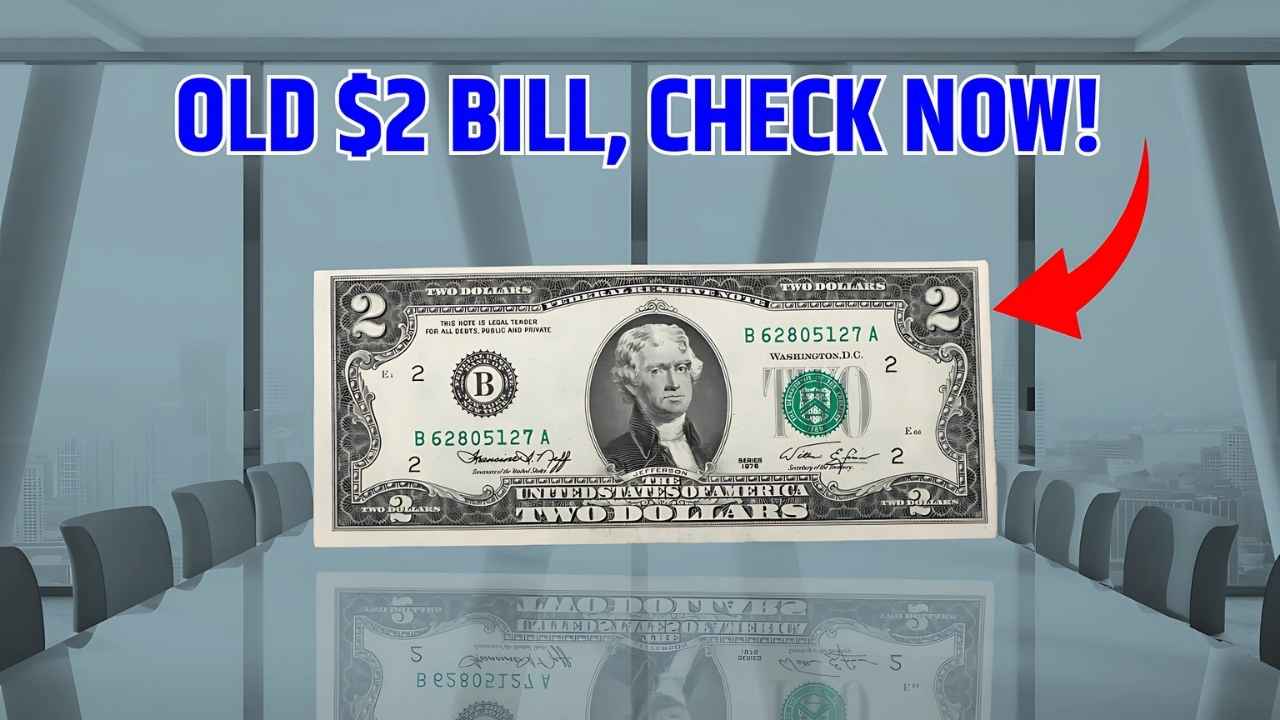Old $2 Bill: Most of us rarely come across $2 bills. When we do, we usually toss them into a drawer or wallet, thinking they’re just odd but still only worth two dollars. But what if we told you that some of these $2 bills, especially those with special serial numbers or historical significance, could be worth thousands of dollars today?
Here’s what you need to know before you spend or give away that old $2 bill.
The Rise in Value: Not Just Pocket Change
While the U.S. Department of the Treasury still prints $2 bills, they’re not circulated as commonly as other denominations. That rarity alone sparks curiosity. However, the real value comes from collector interest and specific details printed on the bills.
Recently, certain $2 bills have been auctioned or sold for anywhere from $500 to over $4,500, depending on their serial number, year of printing, and condition. For example, one note from 2003 with a low serial number fetched more than $2,400 online.
What Makes a $2 Bill Valuable?
Not every $2 bill is valuable, but several key features can drastically increase its worth:
1. Low Serial Numbers
If the serial number starts with multiple zeros, like “00000004,” you’re holding a rare note. Bills with serial numbers under “00001000” are especially desirable.
2. Repeater or Radar Serial Numbers
A “repeater” serial number repeats the same set of digits (e.g., 12121212), while a “radar” reads the same forward and backward (e.g., 12344321). Collectors love these patterns.
3. Star Notes
When a bill gets damaged during printing, the Bureau of Engraving and Printing replaces it with a “star note.” These have a small star next to the serial number and are typically produced in lower quantities, making them collectible.
4. Uncirculated Condition
Crisp, clean bills that look brand new and have never been folded or circulated are far more valuable than worn notes.
5. Older Series
If you have a $2 bill from the early 20th century—especially series from 1928, 1953, or even 1976—it could be of interest to collectors. Bills from earlier years tend to have more value, especially if they’re in good condition.
What Are Collectors Really Paying?
Here are a few recent examples that show what people are actually willing to spend:
- $2 bill from 2003 with serial number “00000024”: Sold for $2,400
- $2 star note in uncirculated condition (from 1976): Valued over $500
- Repeater number $2 note: Sold in auctions for more than $1,200
- A pack of 100 consecutively numbered $2 bills (uncut): Sold for over $4,000
These examples prove that if your bill ticks the right boxes, it’s worth far more than two bucks.
How to Check Your Bill’s Worth
If you’ve found a $2 bill and want to know whether it’s valuable:
- Inspect the Serial Number: Look for low numbers, star symbols, or patterns.
- Note the Year of Issue: Older is generally better.
- Check the Condition: Uncirculated bills are preferred.
- Compare Online: Use sites like eBay, Heritage Auctions, or U.S. Currency auctions to see if similar bills are listed.
- Consult a Currency Appraiser: For rare notes, it’s worth getting a professional opinion.
Should You Spend or Save That $2 Bill?
While many $2 bills are still only worth face value, some can fetch a small fortune. If you have a stash of these tucked away, especially in mint condition or with unique serial numbers, don’t rush to spend them. It might be time to do a little research—or take them to a currency dealer or appraiser.




